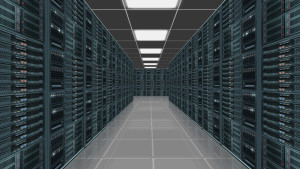 In the evolving world of cloud-based computing, IT leaders are constantly evaluating new technologies and strategies. Choosing a data center hosting partner is perhaps one of the most critical decisions that a business can make. The result of that decision, especially considering events such as peak usage periods and disaster recovery (DR) scenarios, could mean success or failure for the organization.
In the evolving world of cloud-based computing, IT leaders are constantly evaluating new technologies and strategies. Choosing a data center hosting partner is perhaps one of the most critical decisions that a business can make. The result of that decision, especially considering events such as peak usage periods and disaster recovery (DR) scenarios, could mean success or failure for the organization.
In the face of changing technologies within data centers and the emergence of new offerings, it is important to regularly refresh knowledge of bandwidth technologies, network standards, and business continuity precedents. These key areas are critical for any IT stakeholder that is currently re-evaluating a current data center partner or searching for a new hosting partner.
Bandwidth: This is the magic word for providing a positive end-user experience. Workloads can multiply in an instant, and businesses should choose data center partners that can accommodate fast-changing volume.
- Many data centers now offer burstable bandwidth, a solution that allows administrators to change bandwidth allocations based on usage.
- Burstable bandwidth is a great option for industries with cyclical usage patterns; administrators can temporarily increase bandwidth based on demand, then de-provision resources when they are no longer needed.
Network Strength: Time has not overwritten the importance of a strong network infrastructure, which can only be confirmed through network testing.
- It’s a best practice to regularly test the speed and strength of the provider’s network, and evaluate how the organization’s specific data traffic will act on that network.
- When analyzing a network’s suitability, it’s essential to look not just at high-level speed guarantees, but also at components such as ISP segmentation and QoS which will help prevent latency caused by network saturation.
Business Continuity: Unfortunately, any discussion around data centers must include preparation for the worst-case scenario. What happens if the primary system fails? A strong data center partner with an expert DR plan will help ensure that this situation has little to no impact on the overall business.
- Stakeholders should closely examine the DR plans of potential and current data center partners. Evaluate aspects such as workload balancing, swift failover capabilities, and the presence of strong, documented processes in place to handle disasters.
- The best way to ensure that a data center partner is prepared to handle a DR scenario is by conducting a Business Impact Analysis (BIA). This exercise increases the essential element of communication between the customer and the provider and helps both parties have a stronger understanding of the network and its most critical components.
Data centers and the technologies within them are continuing to change on a daily basis. What hasn’t significantly changed is the fact that the data center is a key part of overall IT and business strategy. A good data center must always provide adequate bandwidth, a strong network, and a solid DR plan. To learn more about how to select the right data center partner and to stay informed of the latest data center technologies, contact eXemplify group and ask about data center services.